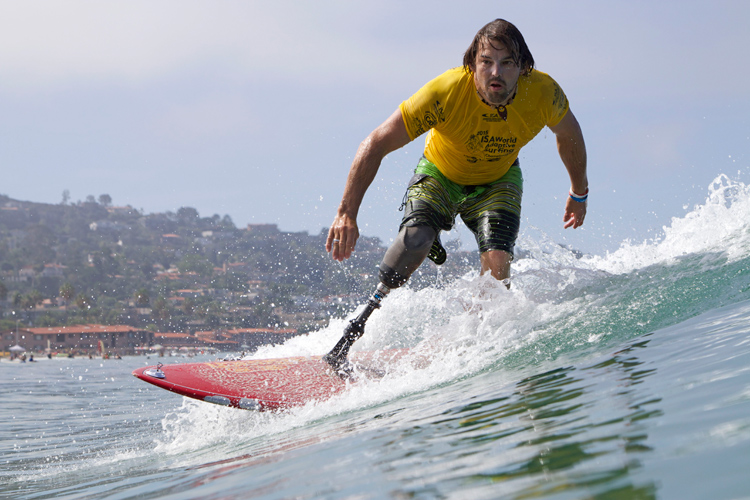Para surfing is an adapted form of surfing that allows people with physical disabilities to ride ocean waves on a surfboard.
The International Surfing Association (ISA) is the world governing body for the sport of surfing.
The organization has been crowning adaptive surfing world champions since 2015.
In the last years, especially since surfing became an Olympic sport, the original designation of adaptive surfing morphed into para surfing.
Why? Because the ISA aims to be code compliant with the para-sports classification structure and eventually join the Paralympic Games.
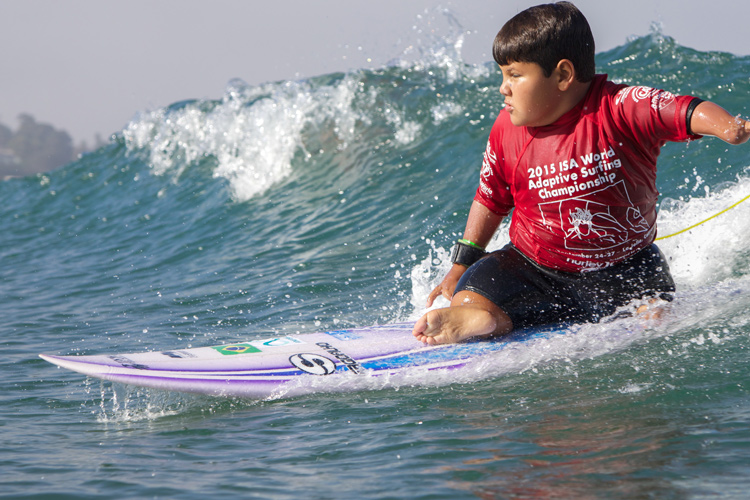
The Para Surfing Classification Criteria
Athletes must have an eligible impairment to compete in para surfing events.
The physical disabilities are listed in the International Standard for Eligible Impairments, which is defined by the International Paralympic Committee (IPC) Athlete Classification Code.
When it comes to para surfing, the ISA decided to adopt nine eligible impairments.
1. Impaired Muscle Power
Surfers with impaired muscle power have an underlying health condition that either eliminates or reduces their ability to voluntarily contract muscles to move or to generate force.
Examples include spinal cord injury - complete or incomplete, tetra-or paraplegia - muscular dystrophy, post-polio syndrome, and spina bifida.
2. Impaired Passive Range of Movement
Surfers with impaired range of movement have a lack or a restriction of passive motion in one or more joints.
Examples include arthrogryposis and contracture resulting from chronic joint immobilization or trauma affecting a joint.
3. Limb Deficiency
Surfers with limb deficiency have a partial or total absence of bones or joints as a consequence of trauma (traumatic amputation), illness (amputation due to bone cancer), or congenital limb deficiency (dysmelia).
4. Leg Length Difference
Surfers that have a difference in the length of their legs as a result of a disturbance of limb growth or as a result of trauma.
5. Short Stature
Surfers with a short stature who have a reduced length in the bones of the lower limbs and/or trunk.
Examples include growth hormone dysfunction, achondroplasia, and osteogenesis imperfecta.
6. Hypertonia
Surfers with hypertonia have an increase in muscle tension and a reduced ability of muscles to stretch, caused by damage to the central nervous system.
Examples include traumatic brain injury, cerebral palsy, and stroke.
7. Ataxia
Surfers with ataxia have uncoordinated movements caused by damage to the central nervous system. Examples include traumatic brain injury, cerebral palsy, stroke, and multiple sclerosis.
8. Athetosis
Surfers with athetosis have continual, slow, involuntary movements. Examples include stroke, cerebral palsy, and traumatic brain injury.
9. Vision Impairment
The determination of the visual class is based upon the eye with better visual acuity whilst wearing the best optical correction using spectacles or contact lenses and/or visual fields, which include central and peripheral zones.
Athletes will be placed into sub-classes as follows:
a) VI1 = B1: Visual acuity poorer than LogMAR 2.6;
b) VI2 = B2 and B3: B2 (visual acuity ranging from LogMAR 1.5 to 2.6 (inclusive) and/or visual field constricted to a diameter of less than 10 degrees) and B3 (visual acuity ranging from LogMAR 1.4 to 1.0 (inclusive) and/or visual field constricted to a diameter of less than 40 degrees);
All athletes are assessed and reviewed by ISA's para surfing international classifiers in order to determine whether they're eligible, not eligible, or under review.
Once the panel announces a final decision, para surfers are seeded into their appropriate sports class.
The Official Para Surfing Classes
The ISA runs eight adaptive surfing disciplines.
Electric-powered surfboards and swim fins are not permitted in any class.
No additional equipment is permitted except for the use of prosthetics, orthotics, or essential safety equipment that does not enhance the ability to surf, except in a couple of disciplines.
1. Para Surfing Stand 1 (PS-S1)
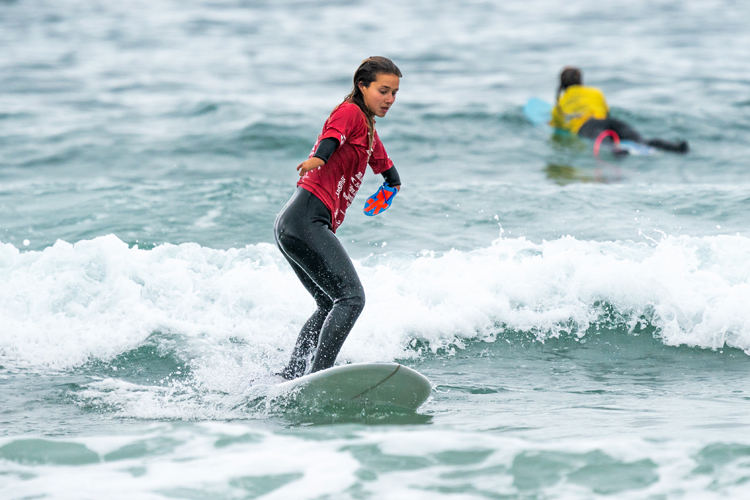
This is a discipline for surfers with an upper-body impairment who ride waves in a standing position.
Athletes are allowed to have support getting into and out of the water and on and off their board but are required to be independent in the water during their competition heat.
Athletes in this class must paddle into a wave without assistance and surf.
Waves will not be scored if a surfer does not stand up on the board.
2. Para Surfing Stand 2 (PS-S2)
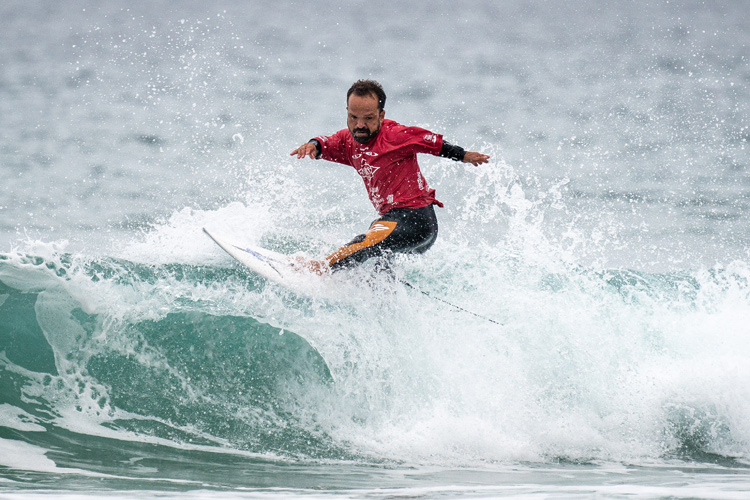
This is a discipline for surfers with a lower-body impairment below the knee or short stature who ride waves in a standing position.
Athletes are allowed to have support getting into and out of the water and on and off their board but are required to be independent in the water during their competition heat.
Athletes in this class must paddle into a wave without assistance and surf.
Waves will not be scored if a surfer does not stand up on the board.
3. Para Surfing Stand 3 (PS-S3)
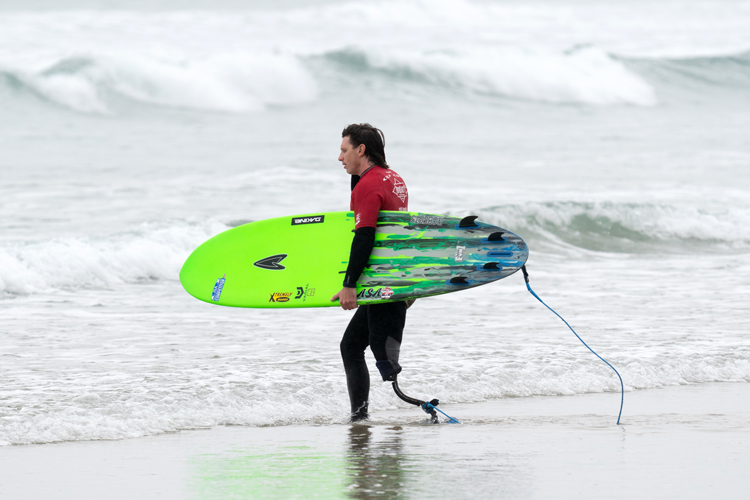
This is a discipline for surfers who ride waves in a standing position with a lower-body impairment above the knee.
Athletes are allowed to have support getting into and out of the water and on and off their board but are required to be independent in the water during their competition heat.
Athletes in this class must paddle into a wave without assistance and surf.
Waves will not be scored if a surfer does not stand up on the board.
4. Para Surfing Kneel (PS-K)
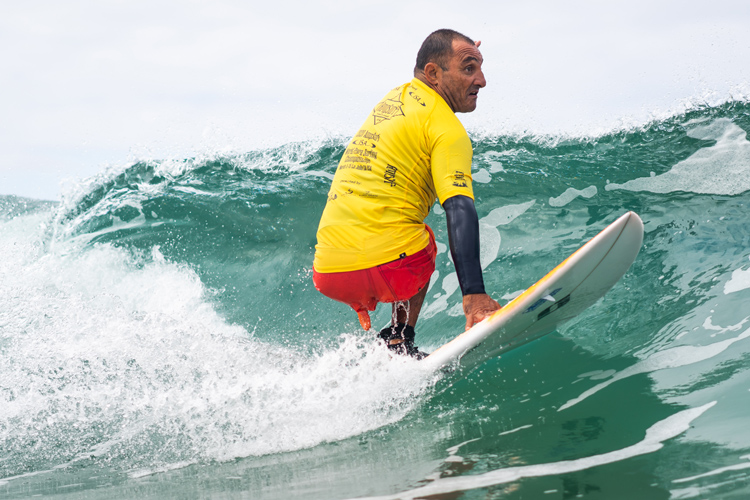
This is a discipline for surfers who ride waves in a kneeling or sitting position.
Athletes are allowed to have support getting into and out of the water and on and off their board but are required to be independent in the water during their competition heat.
Athletes in this class must paddle into a wave without assistance and surf while kneeling or sitting on a surfboard.
Surfing while standing or lying in a prone position is not permitted in this sport class.
Waves will not be scored if an athlete does not kneel or sit.
5. Para Surfing Prone 1 (PS-P1)
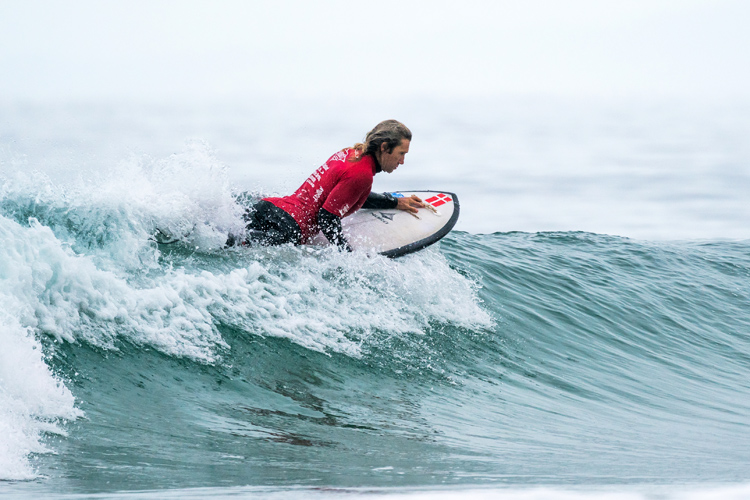
This is a discipline for surfers who ride waves in a prone position.
They are allowed to have support getting into and out of the water and on and off their board.
Athletes are permitted to have assistance from a surf guide with paddling out to the lineup and being pushed into waves but are required to be independent while surfing a wave.
Athletes in this sport class will paddle into a wave with assistance and surf while in a prone position on a surfboard.
Surfing while sitting, kneeling, or standing is not permitted in this sport class.
Waves will not be scored if an athlete does not lie in a prone position.
Additional equipment is permitted in this sport class to assist the athlete in remaining on the surfboard or as essential safety equipment that does not enhance the ability to surf.
6. Para Surfing Prone 2 (PS-P2)
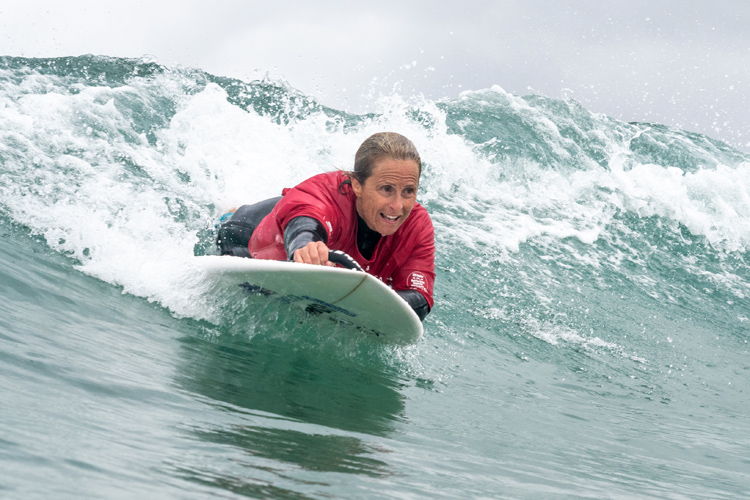
This is a discipline for surfers who ride waves in a prone position and need assistance to paddle into waves while in the water.
Athletes in this sport class are permitted to have support getting into and out of the water and on and off their board.
Athletes are permitted to have assistance from a surf guide with paddling out to the lineup and being pushed into waves.
Athletes are required to be independent while surfing a wave.
Athletes in this sport class will paddle into a wave with assistance and surf while in a prone position on a surfboard.
Surfing while sitting, kneeling, or standing is not permitted in this sport class.
Waves will not be scored if an athlete does not lie in a prone position.
Additional equipment is permitted in this sport class to assist the athlete in remaining on the surfboard or as essential safety equipment that does not enhance the ability to surf.
7. Para Surfing Visual Impairment 1 (PS-VI1)
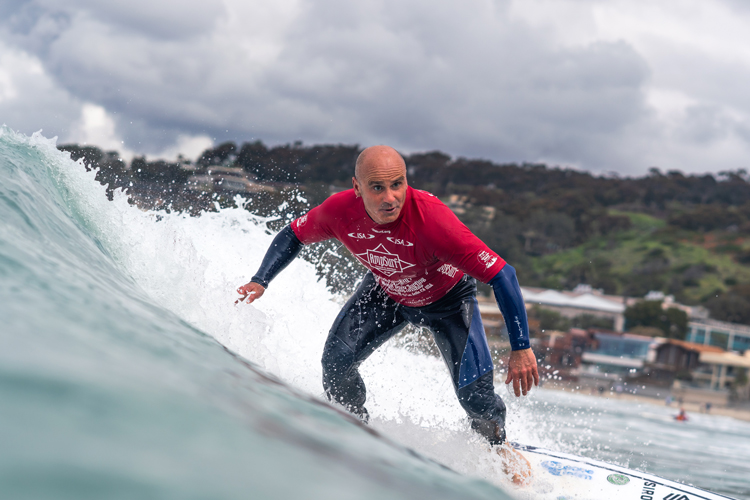
This is a discipline for surfers who have a visual impairment with total blindness.
Athletes in this sport class are permitted to have support getting into and out of the water and on and off their surfboard but are required to be independent in the water during their competition heat.
Athletes in this sport class will paddle into a wave without assistance and surf while standing on a surfboard.
Surfing while sitting, kneeling, or lying in a prone position is not permitted in this sport class.
Waves will not be scored if a surfer does not stand up on the board.
The athlete is permitted to choose one surf guide to be in the water during the competition and receive verbal cues from the surf guide while paddling and catching waves.
8. Para Surfing Visual Impairment 2 (PS-VI2)
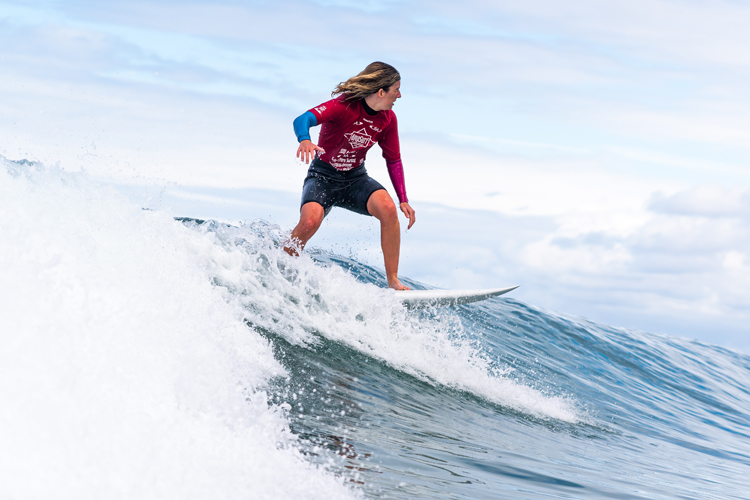
This is a discipline for surfers who have a visual impairment with partial blindness.
Athletes in this sport class are permitted to have support getting into and out of the water and on and off their surfboard but are required to be independent in the water during their competition heat.
Athletes in this sport class will paddle into a wave without assistance and surf while standing on a surfboard.
Surfing while sitting, kneeling, or lying in a prone position is not permitted in this sport class.
Waves will not be scored if a surfer does not stand up on the board.
The athlete is permitted to choose one surf guide to be in the water during the competition and receive verbal cues from the surf guide while paddling and catching waves.
Do you want to join the para surfing community? Contact your nearest adaptive surfing organization.
